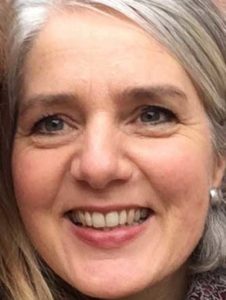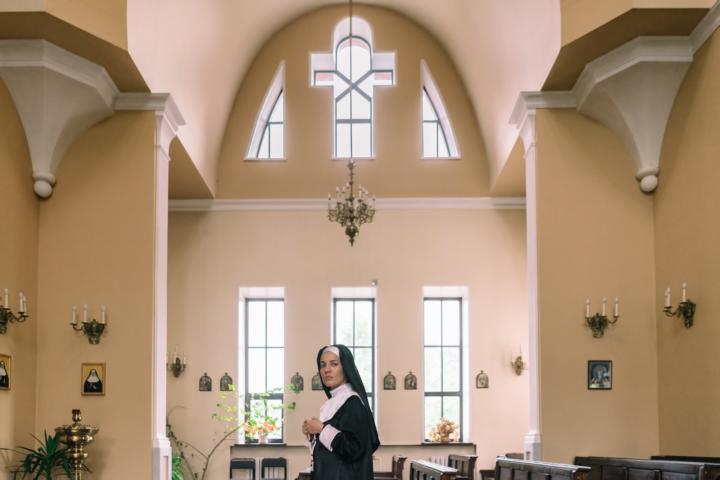Author: Anette Grießer
In the Middle Ages there existed female Christian religious communities called Beguines. There women led a relatively self-determined life beyond marriage, motherhood and membership to a nunnery. These communities developed their own living mysticism, in which the encounter and union of the soul with God stood in the foreground.
When the creation chapter of the Bible mentions humans, it is not primarily about man and woman. Although it even said: „God created the human in his image, in the image of God he created them. He created them as man and woman. It is first of all about the person as a whole, about their soul or what they have in common with the great soul of God. Only then does it go into the duality of the polar world. Thus man and woman appear as male and female. In the origin, therefore, in creation there is first unity Then separation into polarity or „equal oppositeness“. Just as the North Pole is not more important than the South Pole, the day is not better than the night and the earth is not more important than heaven.
So whenever God’s love enters a human life and man answers, the inner experience of the divine is gender-neutral. But the experience is, according to its origin, one, just as the essence of man and woman is similar in its innermost being. In the mystical sense, divine revelations that refer to man and woman have always meant the essence of humanity and not the assignment of gender roles.

Mathis Gothart Nithart, genannt Grünewald: Ausschnitt vom Isenheimer Altar, 1512-1516
EXTERNALISED RELIGIOSITY| MALE DOMINANCE AND THE SUFFERING OF WOMEN
Christianit, shaped the way people felt, thought and acted. It was the state religion in the Roman Empire in 380 AD and worldly and ecclesiastical concerns were closely interwoven. The image of women at that time was based on the tradition of antiquity. For some influential men such as Aristotle, women around 300 BC were „mutilated men without souls“ and regarded as subordinates. In the outer Jewish and Christian tradition, the false interpretation of Genesis has continued this image. The woman comes from Adam’s rib and she is guilty of expulsion from paradise by seducing to enjoy the fruits of the forbidden tree together with the snake.
This externalised and male-centred Christian theology, it explains that women in the past experienced severe suffering especially under the dominance of the Church. Also from German mysticism, since in the Middle Ages predominantly male names have become known, Jakob Böhme, Meister Eckhart, Johannes Tauler and Heinrich Seuse among many others belong to it. Few female mystics have made it into public consciousness. When women caused a stir with their spiritual ideas, they often worked within Christian orders, such as the abbess Hildegard von Bingen in the 12th century. Or Teresa von Avila in the 16th century. They have both been especially honoured by the institution of the church and its canonisations.
We can be convinced that Genesis is a human- and thus also a woman-friendly human work with deep symbolic content, a cryptic allegory in the sense of the Rosicrucians.
BEGUINES | MOVEMENT OF A FEMALS SPIRITUALITY
Less well known are the so-called pious women of the Middle Ages, who from the 12th century onwards were called Beguines. They were mostly noble, socially committed women and led a spiritual life. Beguines decided very progressively and independently against the given possibilities of their time. They had high ideals and did not want to be married or live in a monastery. Therefore, they developed a special way of life, a kind of emancipatory movement. They became founders of a specifically female spirituality, which they lived in, independently of the institutions. It was not about hostility towards men, but about the desire for a self-determined life. For rules recognised as truth. As a rule, the Beguines lived in a Christian community, in so-called Beguine farms or houses. They did not take any vows and did not live in seclusion.

Here a woman without a religious order wrote as a Begine literature with theological content in people’s language instead of Latin and in addition of pictures of sexual love.
In the wave of religious movements of the Middle Ages, numerous women joined together in Beguine communities. They lived either alone or in small and large convents of up to 50 women. At regular meetings they made decisions in groups. In Cologne alone, a centre of the German Beguines, around 1400 there were about 1,150 Beguines living in such communities, while others remained in their homes or with their families. In part, the convents have survived by living off a foundation or through donations. Others financed their livelihood by handcrafts . They worked as midwives, teachers, silk weavers, spinners, laundresses, and others.
The proceeds flowed into the community, into care for the poor and the sick. Or they invested in new housing and workshops. The wealthy convents even lent money to the city councils. Thus secured the support of the municipalities. An important concern of the Beguines was the education of girls – they consciously stood up for the girls from impoverished families. They taught them how to deal with religious values and gave them practical support in planning their lives.
A life as a Beguine enabled women to avoid the socially imposed roles of marriage and motherhood.
It was perhaps the only way to lead an alternative life of self-reliance, self-efficacy and economic independence. We looked at three of such these inspiring women, in the following.
START OVER| BEGUINES TODAY
Within the framework of the women’s movement, they founded some modern Beguine communities. In a moderate form, these link to the social model of the historical Beguines. There it emphasises particularly the aspect of self-determined coexistence in women’s communities. The times when monastery-like forms of community were necessary for women are over. However, the longing for a self-determined life still exists.

About the author
Anette Grießer, born 1970, is a landscape architect. She takes interest in religion and spirituality with their interfaces, historical figures and their significance for the present since her youth. She has been a member of the Rosicrucian Order AMORC for over 15 years.
Image credits: © Wikimedia Commons
This article was originally published on the German Homepage of Tattva Viveka: Beginen – Mystikerinnen des Tuns




